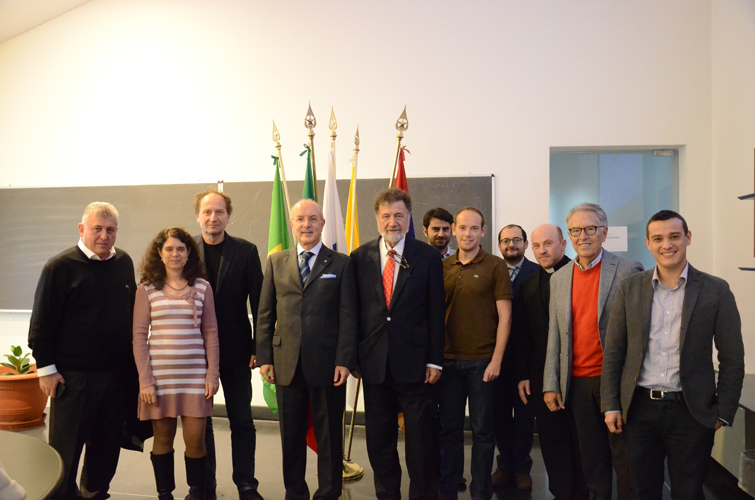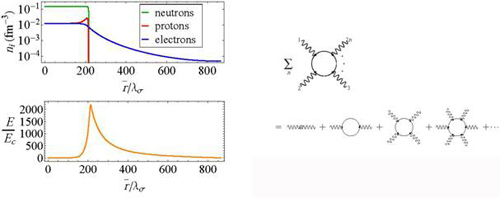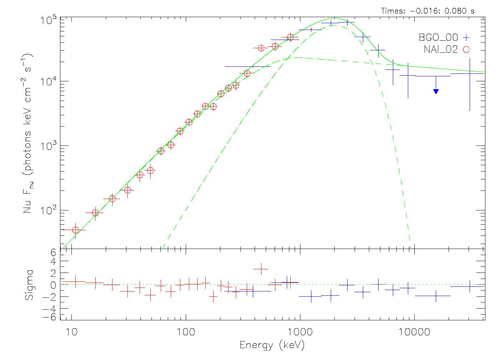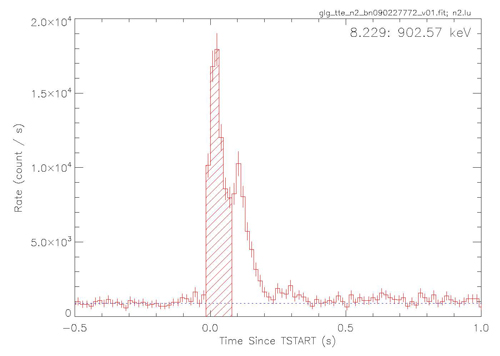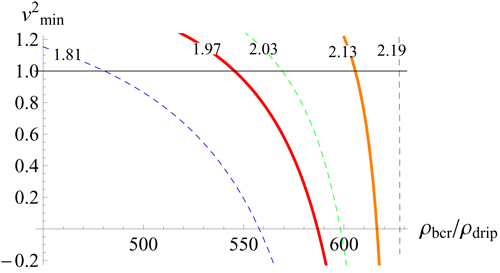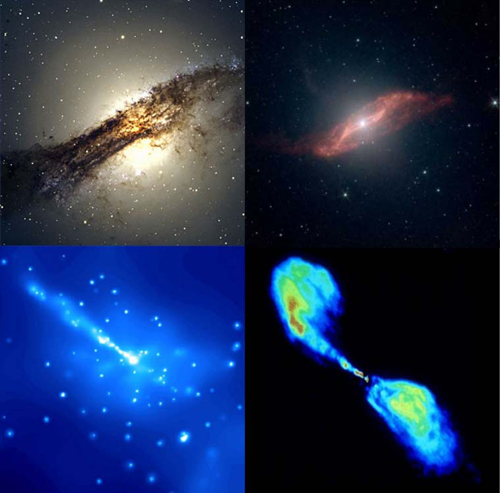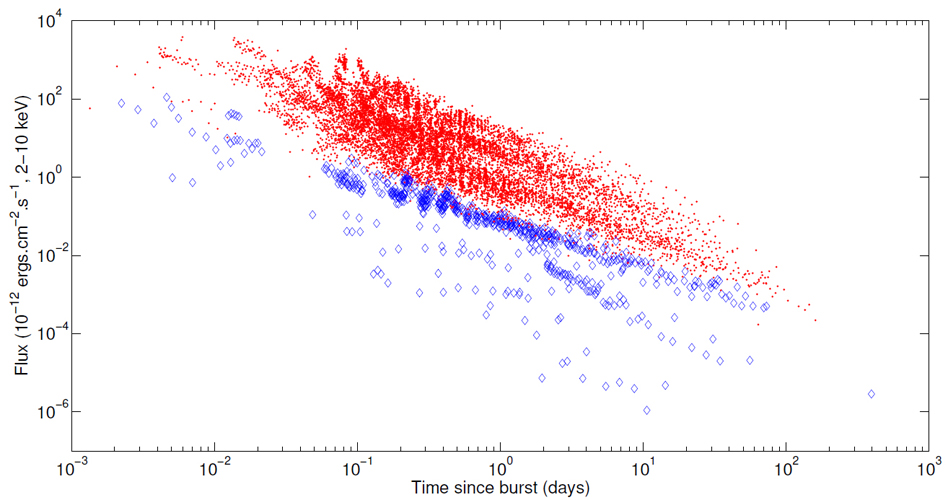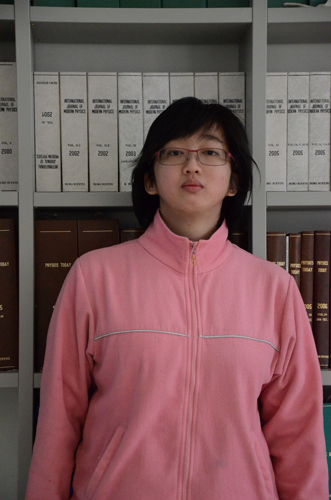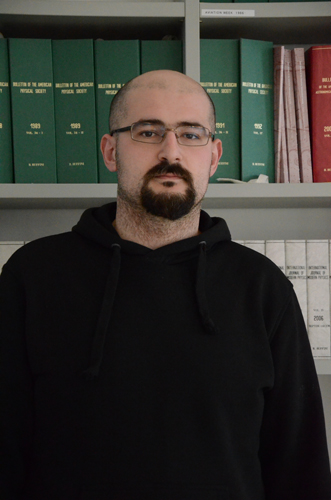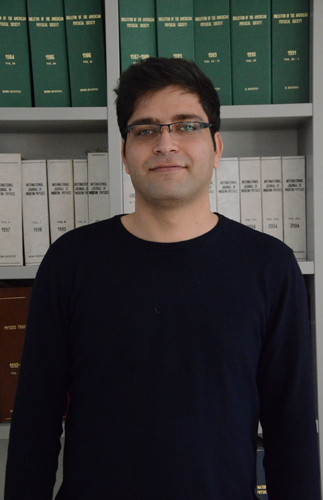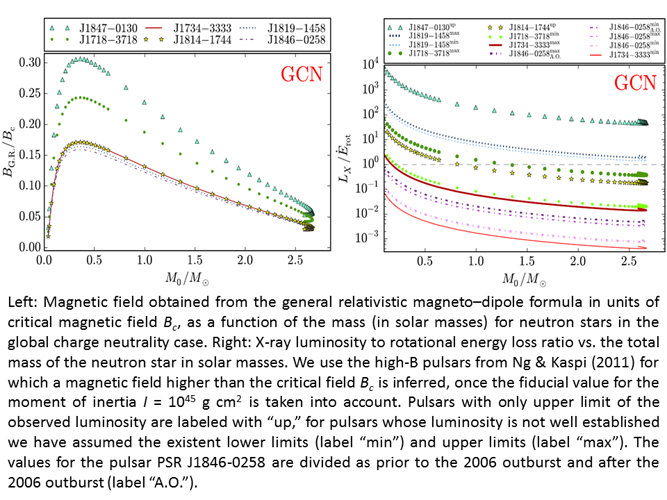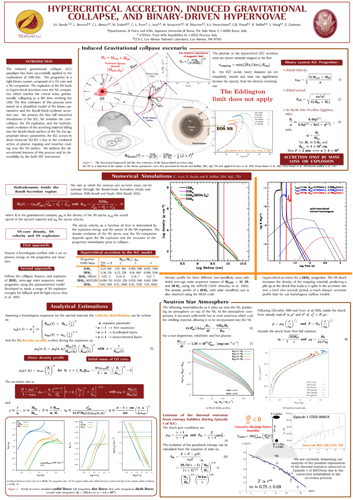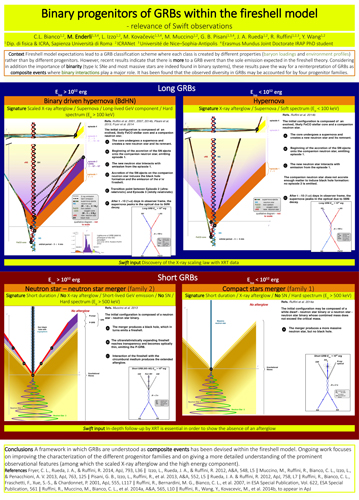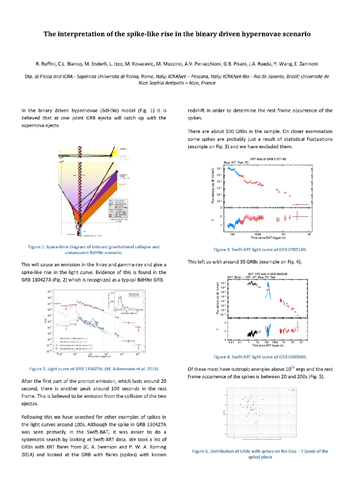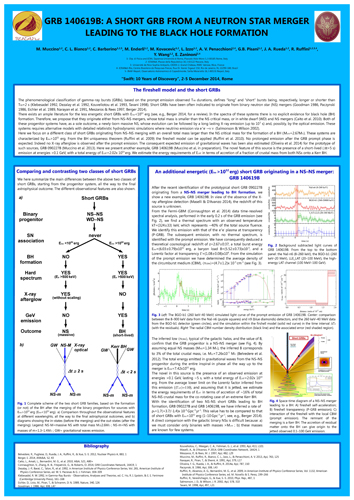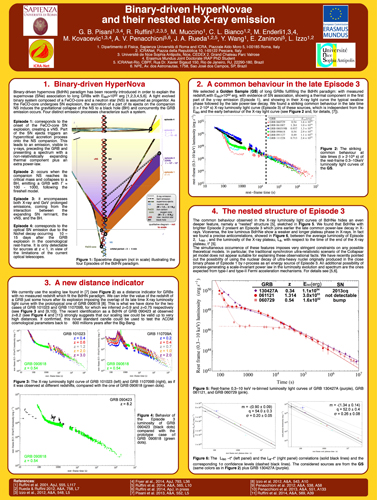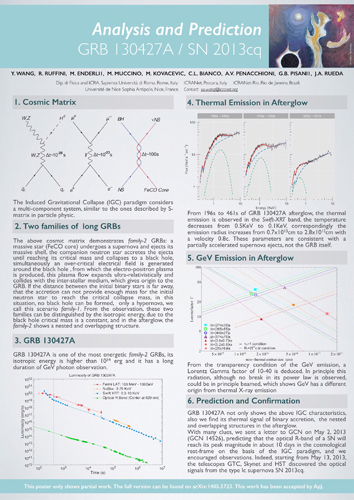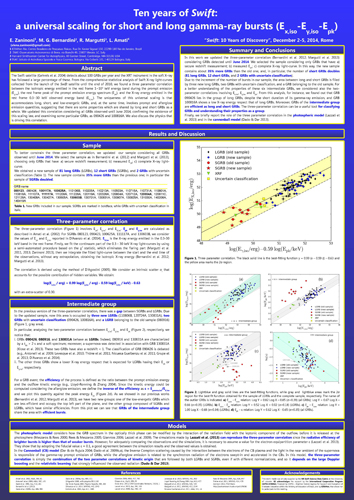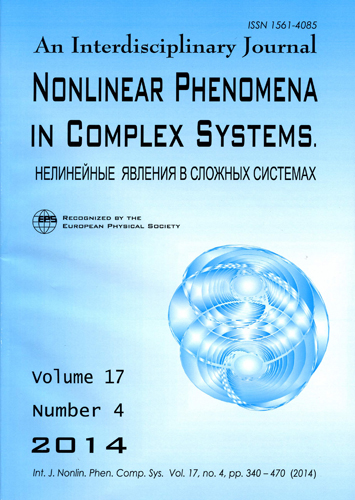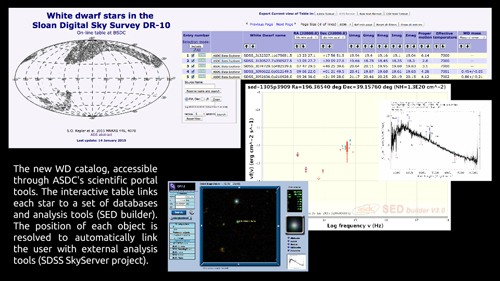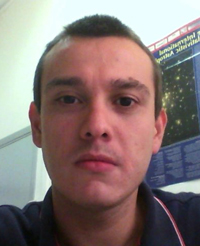

| Newsletter Russian November/January |

|

|





ICRANet Newsletter
Новости ICRANet
Ноябрь /декабрь 2014 – январь 2015
СОДЕРЖАНИЕ
- Заседание ученого совета за 2014 год - Защиты диссертаций Ph.D и дипломы - Гости и новые студенты в ICRANet - Свежие публикации и труды конференций - Новости ICRANet Rio - Предстоящие конференции
Заседание ученого совета за 2014 год
С 27 по 28 ноября в штаб-квартире ICRANet в Пескаре состоялось 12 заседание ученого совета ICRANet.
На нем с представителями государств и институтов - членов ICRANet, собравшимися в Пескаре: проф. Феликс Агаронян (Армения), др. Карло Лучиано Бьянко (ICRA), проф. Массимо Делла Валле (Италия), др. Габлиэле Джонти (Ватикан), др. Лука Иццо (уполномоченный от проф. Джона Местера, Стэнфордский университет), проф. Дебора Перес Менэзэс (временный представитель Бразилии), проф. Хорхе Руэда (уполномоченный от проф. Дэвида Арнетта, Аризонский университет) и проф. Ремо Руффини (директор ICRANet) обсуждались научные результаты и публикации за 2014 год в различных направлениях исследований, проводимых ICRANet. Также были представлена научная и преподавательская работа в ICRANet за 2014 год: как то организация международных научных конференций и летних школ, подписание договоров о сотрудничестве научных договоров с лидирующими организациями, в частности международная программа Ph.D. в релятивистской астрофизике (IRAP-PhD). Полный научный отчет ICRANet за 2014 год, представленный директором ICRANet ученому совету ICRANet находится здесь: www.icranet.org/report_2014
Защиты диссертаций Ph.D и дипломы
Янбин Ву, «Сильные электромагнитные поля в физике и астрофизике: нейтронные звезды, черные дыры и интенсивные лазерные поля», защита состоялась 10 октября 2014 года в Римском университете "Sapienza"
Комиссия: проф. Альдо Тревес (Университет Инсубрии, председатель), проф. Антонио Капоне (Римский университет "Sapienza"), проф. Цезарь Аугусто Зен Васконселлос (Федеральный университет Rio Grande do Sul, Бразилия)
Fundamental phenomena of quantum electrodynamics (QED) and other fundamental interactions in strong electromagnetic fields are among the important topics in physics and astrophysics. In the thesis, we study various phenomena of strong electromagnetic fields in physics and astrophysics, from neutron stars and black holes to intense laser fields. The core-crust interface of neutron stars with global charge neutrality is studied; in this core-crust interface, a very strong electric field which is overwhelming the critical value is developed. This study is generalized to the case of heavy atoms. Extracting energy from black holes has been an interesting topic for decades. Taking into account one loop nonperturbative QED effects of strong fields, the Einstein-Euler-Heisenberg theory is formulated and the properties of black holes such as the maximally extractable energy are studied. Turning to the laboratory experiments, we studied the Breit-Wheeler process which is one of most relevant elementary processes in astrophysics, in the case that a photon colliding with a bifrequent field. High multiphoton phenomena has been shown.
On the left: The core-crust interface of neutron stars with global charge neutrality, see [Rueda, Ruffini, Wu, and Xue, Phys. Rev C 89, 035804 (2014)]. On the right: One-loop Feynman diagrams related to the Euler-Heisenberg effective Lagrangian.
The thesis is based on following publications: 1) "Nonlinear Breit-Wheeler process in the collision of a photon with two plane waves", Y. B. Wu, S. S. Xue, Phys. Rev. D90, 013009 (2014). 2) "Einstein-Euler-Heisenberg Theory and Charged Black Holes", R. Ruffini, Y. B. Wu, S. S. Xue, Phys. Rev. D 88, 085004 (2013). 3) "Surface tension of the core-crust interface of neutron stars with global charge neutrality Rueda", Jorge A. R. Ruffini, Y. B. Wu, S. S. Xue, Phys. Rev. C89 (2014) 3, 035804. 4) "On the surface tension and Coulomb energy of neutron-star matter Wu", Yuan-Bin J. Korean Phys. Soc. 65 (2014) 6, 850-854.
Он продолжает свою научную карьеру как научный сотрудник (пост-док) в институте ядерной физики общества Макса Планка в Гейдельберге, Германия
Дамиен Беге «Фотосферное излучение гамма-всплесков: от теоретического анализа к наблюдательным ограничениям»“, защита состоялась 28 октября 2014 года в Римском университете "Sapienza"
Commission members: Prof. Paolo De Bernardis (University of Rome “Sapienza”, Italy), prof. Roberto Capuzzo Dolcetta (University of Rome “Sapienza”, Italy), Prof. Asaf Pe'er (University College Cork, Ireland), Prof. César Augusto Zen Vasconcellos (Federal University of Rio Grande do Sul, Brazil), Prof. Massimo Della Valle (Astronomical Observatory of Capodimonte, Napoli, Italy), Prof. Aldo Treves (University of Insubria, Italy)
Комиссия: проф. Паоло де Бернардис Prof. Paolo De Bernardis (Римский университет “Sapienza”), проф. Роберто Капуццо Дольчетта (Римский университет “Sapienza”), проф. Асаф Пеер (Университетский колледж Корка, Ирландия), проф. Цезарь Аугусто Зен Васконселлос (Федеральный университет Rio Grande do Sul, Бразилия), проф. Массимо Делла Валле (астрономическая обсерватория Capodimonte, Неаполь), проф. Альдо Тревес (Университет Инсубрии)
In figure: Time-integrated spectra of the photospheric emission of a coasting outflow computed with different methods. A black-body (curve 1) is displayed for comparison. It appears clearly that the observed spectrum is broader than the Planck spectrum.
The thesis is based on following publications: 1) "Monte Carlo Simulations of the Photospheric Emission in Gamma-Ray Bursts", D. Bégué, I.A. Siutsou and G.V. Vereshchagin, ApJ 767 (2013) 139. 2) "Transparency of an instantaneously created electron-positron-photon plasma", D. Bégué and G.V. Vereshchagin, MNRAS 439 (2014) 924. 3) "Transparency Parameters from Relativistically Expanding Outflows", D. Bégué and S. Iyyani, ApJ 792 (2014) 42. Poynting flux dominated jets challenged by their photospheric emission, D. Bégué and A. Pe’er, ApJ (2015), in press; arXiv:1410.2730.
Он продолжает свою научную карьеру как научный сотрудник (пост-док) в университете Стокгольма, Швеция
Марко Муччино, «Роль бинарных систем как исходных систем коротких гамма-всплесков и длинных гамма-всплесков, ассоциированных со сверхновыми», защита состоялась 26 ноября 2014 года в Римском университете "Sapienza"
Комиссия: проф. Паоло де Бернардис (Римский университет "Sapienza" председатель), проф. Лоренцо Амати (Национальный институт астрофизики - IASF Болонья, Италия), проф. Паоло Джомми (ASDC-Итальянское космическое агентство, Рим), проф. Марко Тавани (Римский университет “Tor Vergata”, Италия)
The thesis addressed the physical origin of the emission of very energetic short and long Gamma-ray bursts (GRBs) associated with supernovae (SNe). From detailed data analyses performed within timescales from milliseconds up to several days, from the X-rays to gamma-rays (up to 100 GeV), the proposal is that both systems originate from binary systems. Very energetic short GRBs originate from merging of neutron stars (NSs). The total mass of these systems must be larger than the NS critical mass, namely 2.67 times the mass of our Sun, to form a black hole (BH) and emit a GRB. For long GRBs the association with SNe is explained within the induced gravitational collapse (IGC) paradigm: a binary progenitor composed of a naked core of an evolved star, depleted by the outer hydrogen and helium, and a companion NS. The naked core explodes as a SN Ic, explaining the lack of the above elements, while its ejected matter accretes onto the NS, triggering the formation of a BH and, again, the GRB emission. The further evolution of the system and the consequent emission of these stages are discussed and explained, allowing to predict the occurrence or not of a SN associated to a GRB.
In Figure, the transparency emission (P-GRB) of the first recognized short GRB originating from a NS-NS merger leading to BH formation: GRB 090227B. On the left, the light curve from the NaI-n2 detector (on-board the Fermi satellite) of the P-GRB at a time resolution of 16 milliseconds. On the right, the corresponding spectrum where a thermal component (the narrow dashed function at the center) is evident, as predicted by the Fireshell model, with one of the highest temperature ever inferred.
The thesis is based on following publications: 1) "Evidence for a proto-black hole and a double astrophysical component in GRB 101023", A.V. Penacchioni, R. Ruffini, L. Izzo, M. Muccino, C.L. Bianco, L. Caito, B. Patricelli, L. Amati, A&A, 538, A58 (2012). 2) "GRB 090227B: the missing link between the genuine short and disguised short GRBs", M. Muccino; R. Ruffini; C.L. Bianco; L. Izzo; A.V. Penacchioni. ApJ 763, 125 (2013). 3) "GRB 110709B in the induced gravitational collapse (IGC) paradigm, A.V. Penacchion"i, R. Ruffini, C.L. Bianco, L. Izzo, M. Muccino, G.B. Pisani, J. A. Rueda, A&A, 551, A133 (2013). 4) "On a novel distance indicator for Gamma-Ray Bursts associated with Supernovae", G.B. Pisani, L. Izzo, R. Ruffini, C.L. Bianco, M. Muccino, A.V. Penacchoni, J. A. Rueda, Y. Wang. A&A, 52L, 5 (2013). 5) "GRB 090510: A Disguised Short Gamma-Ray Burst with the Highest Lorentz Factor and Circumburst Medium", M. Muccino, R. Ruffini, C.L. Bianco, L. Izzo, A.V. Penacchioni, G.B. Pisani, ApJ, 772, 62 (2013). 6) "Induced Gravitational Collapse in the BATSE era: the case of GRB 970828", R. Ruffini; L. Izzo; M. Muccino; J.A. Rueda; C. Barbarino; C.L. Bianco; H. Dereli; M. Enderli; A.V. Penacchioni; G.B. Pisani; Y. Wang.,submitted to A&A (arXiv:1311.7432), 2013. 7) "On binary-driven hypernovae and their nested late X-ray emission", R. Ruffini, M. Muccino, C. L. Bianco, M. Enderli, L. Izzo, M. Kovacevic, A. V. Penacchioni, G. B. Pisani, J. A. Rueda, Y. Wang, A&A, 565, L10 (2014). 8) "GRB 130427A and SN 2013cq: A Multiwavelength Analysis of An Induced Gravitational Collapse Event", R. Ruffini, Y. Wang, M. Kovacevic, C. L. Bianco, M. Enderli, M. Muccino, A. V. Penacchioni, G. B. Pisani, J. A. Rueda. ApJ in press (2014). 9) "Induced gravitational collapse at extreme cosmological distances: the case of GRB 090423", R. Ruffini, L. Izzo, M. Muccino, G. B. Pisani, J. A. Rueda, Y. Wang, Barbarino, C. L. Bianco, M. Enderli, M. Kovacevic, A&A, 569, A39, (2014). 10) "A search for Fermi bursts associated with supernovae and their frequency of occurrence", M. Kovacevic, L. Izzo, Y. Wang, M. Muccino, M. Della Valle, L. Amati, C. Barbarino, M. Enderli, G. B. Pisani, L. Li, A&A, 569, A108 (2014) 11) "GRB 140619B: a short GRB from a binary neutron stars leading to the black hole formation", M. Muccino, R. Ruffini, M. Kovacevic, L. Izzo, F. G. Oliveira, J. A. Rueda, C.L. Bianco, M. Enderli, A.V. Penacchioni, G.B. Pisani, Y. Wang, E. Zaninoni, ArXiv:1412.1018, 2014.
Он продолжает свою научную карьеру как научный сотрудник (пост-док) в Римском университете "Sapienza", Италия
Джованни Баттиста Пизани, «Новая парадигма для высокоэнергичных гамма-всплесков, ассоциировнных со сверхновыми: к новой стандартной свече», защита состоялась 26 ноября 2014 года в Римском университете "Sapienza"
Комиссия: проф. Массимо Теста (Римский университет "Sapienza" председатель), проф. Цезарь Аугусто Зен Васконселлос (Федеральный университет Rio Grande do Sul, Бразилия), проф. Кристофер Ли Фраер (Национальная лаборатория Лос-Аламоса, США)
The PhD research project included the reduction and analysis of Gamma Ray Bursts (GRBs) data from different satellites, such as Batse, Swift or Fermi. GRBs are flashes in gamma-rays observed in distant galaxies. They can last from milliseconds to several minutes with a released energy of the order of the solar mass. They are indeed the most powerful events ever observed in the Universe. The attention was focused on GRBs associated with Supernovae (SNe). It have been recently proposed the Induced Gravitational Collapse (IGC) occurring in a particular class of binary systems as progenitors for the aforementioned GRB-SN sources. Such phenomena are referred as Binary-driven HyperNovae (BdHNe). We have further developed the BdHN paradigm and enlarged the sample of BdHN candidates. One of the most exciting outcomes of this work is the possibility to consider this class of BdHN events as a standard candle. If confirmed, this result could provide new independent challenges on the current cosmological model back to 600 millions years only after the Big Bang.
In figure: The plot shows the X-ray afterglow luminosity of a sample of GRB sources as a function of the rest-frame time after the GRB explosion. The sample is composed by the six GRB listed in the upper table: they all are associated with a SN, have a measured redshift, have an isotropic explosion energy larger than 10^52 ergs, and have very good quality X-ray data. Furthermore, they have all been classified as binary-driven hypernovae (BdHNe).
The X-ray luminosities of all the considered sources clearly show the same decaying behavior after about 20000 seconds, despite their separate behaviors at earlier times and the different energies of their relative GRB source. We currently use this scaling law to infer the redshifts of similar sources when it is not measured, and to predict the SN arising about 10-15 days after the initial explosion. If the validity of this law will be confirmed for any redshift, it would open the possibility to use BdHNe as standard candles to test the current cosmological model. The thesis is based on following publications: 1) "GRB 090510: a disguised short GRB with the highest Lorentz factor and circumburst medium", Muccino, M.; Ruffini, R.; Bianco, C. L.; Izzo, L.; Penacchioni, A. V.; Pisani, G. B.,2013, ApJ, 772, 62. 2) "GRB 110709B in the induced gravitational collapse paradigm", Penacchoni, A.V.; Ruffini, R.; Bianco, C. L.; Izzo, L.; Muccino, M.; Pisani, G. B.; Rueda, J. A., 2013, A&A, 551, A133. 3) "Novel distance indicator for gamma-ray bursts associated with supernovae''", Pisani, G. B.; Izzo, L.; Ruffini, R.; Bianco, C. L.; Muccino, M.; Penacchioni, A. V.; Rueda, J. A.; Wang, Y., 2013, A&A, 552, L5. 4) "On binary-driven hypernovae and their nested late X-ray emission", Ruffini, R.; Muccino, M.; Bianco, C. L.; Enderli, M.; Izzo, L.; Kovacevic, M.; Penacchioni, A. V.; Pisani, G. B.; Rueda, J. A.; Wang, Y., 2014, A&A , 565, L10. 5) "Induced gravitational collapse at extreme cosmological distances: the case of GRB 090423", Ruffini, R.; Izzo, L.; Muccino, M.; Pisani, G. B.; Rueda, J. A.; Wang, Y.; Barbarino, C.; Bianco, C. L.; Enderli, M.; Kovacevic, M., 2014, A&A, 569, A39. 6) "A search for Fermi bursts associated to supernovae and their frequency of occurrence", Kovacevic, M.; Izzo, L.; Wang, Y.; Muccino, M.; Della Valle, M.; Amati, L.; Barbarino, C.; Enderli, M.; Pisani, G. B.; Li, L., 2014, A&A, 569, A180. 7) "GRB 130427A and SN 2013cq: A Multi-wavelenght Analysis of an Induced Gravitational Collapse Event", Ruffini, R.; Wang, Y.; Kovacevic, M.; Bianco, C. L.; Enderli, M.; Muccino, M.; Penacchioni, A. V.; Pisani, G. B.; Rueda, J. A., 2015, ApJ, 798, 10. 8) "Induced Gravitational Collapse in the BATSE era: the case of GRB 970828", Ruffini, R.; Izzo, L.; Muccino, M.; Rueda, J. A.; Barbarino, C.; Bianco, C. L.; Dereli, H.; Enderli, M.; Penacchioni, A. V.; Pisani, G. B.; Wang, Y., in press, Astronomy Reports.
Джонас Педро Перейра, «Общерелятивистские электродинамические процессы в нейтронных звездах и черных дырах» , защита состоялась 1 декабря 2014 года в Римском университете "Sapienza"
Комиссия: проф. Массимо Теста (Римский университет "Sapienza" председатель), проф. Дебора П. Менэзэс (федеральный университет Санта Катарины, Бразилия), проф. Родриго Негрейрос (федеральный университет Fluminense, Бразилия)
In this thesis the investigation of some of the physical consequences associated with the presence of an electrodynamical structure in astrophysical objects is presented. First the thermodynamics of charged black holes within nonlinear Lagrangians to the electromagnetism, the ones that generalize the Maxwellian Lagrangian is scrutinized. The aforementioned formalism into their own description and interactions, elucidating several of their aspects, the ones to be confronted with observations in order to assess their existence is applied. The solution to general relativity minimally coupled with nonlinear electromagnetism in the slowly rotating case and made use of the physics of neutrinos to probe and characterize such spacetimes is also founded. Stability analyses were also formulated and scrutinized for thin-shells interacting with black holes, as well as for stratified stars with surface degrees of freedom, for investigating their subtleties and fingerprints, of fundamental importance for their observational searches.
In figure: When surface degrees of freedom (SDF) are present in a neutron star, for example in a thin layer splitting its core and crust, the stability of such a star changes due to the dynamics of the aforesaid SDF, when compared to a continuous system [see Phys. Rev. D 90, 123011 (2014) for details]. Here we show a numerical catalogue for the stability of thin shells present in globally neutral neutron stars where all the interactions are taken into account [Phys. Lett. A 883, 1 (2012) ]. In the abscissa is a range of densities at the base of the crusts (bcr) in neutron stars, normalized by the neutron drip density (drip), of the order of 10^11g/cc. The ordinate is the squared minimum velocity of the sound (min), related to adiabatic thin shells. For each given density at the base of the crust for each curve (related to a given central density in a neutron star, the number present on the curve in units of the nuclear density, 10^14g/cc), stable shells are those whose velocities of the sound are larger than its associated minimum speed of the sound and smaller than the unit (the velocities here are normalized by the speed of light in vacuum). Negative values of the ordinate for given densities at the base of the crust mean that any equation of state of the shells in the associated neutron stars lead to stable configurations. The density at the base of the crust must not exceed the nuclear density for the aforesaid model. Therefore, the thin shell stabilty only per se leads to a maximum mass of neutron stars within this model: 1.97 solar masses, associated with a density of 2.2 times the nuclear density, as given by the dashed brown curve. Finally, each physical neutron star should be a point in this plot, since it would have a definite equation of state for its shell, a central and at the base of the crust densities and then one could immediately assess whether or not it is stable against radial shell displacements.
The thesis is based on following publications: 1) "On the black hole mass decomposition in nonlinear electrodynamics", Jonas P. Pereira, Herman J. Mosquera-Cuesta, Jorge A. Rueda, and Remo Ruffini, Phys. Lett. B 734, 396 (2014). 2) "Stability of thin-shells interfaces inside compact stars", Jonas P. Pereira, Jaziel G. Coelho, and Jorge A. Rueda, Phys. Rev. D 90, 123011 (2014). 3) "Radial stability in stratified stars", Jonas P. Pereira and Jorge A. Rueda, Accepted for publication in Astrophys. J. (2015). 4) "Energy decomposition within Einstein-Born-Infeld black holes", Jonas P. Pereira and Jorge A. Rueda, submitted to Phys. Rev. D (2015). 5) "Matching arbitrary slowly rotating spacetimes and the issue of energy conditions", Jonas P. Pereira and Jorge A. Rueda, submitted to Phys. Lett. B (2015). 6) "Nonlinear electrodynamics in slowly rotating spacetimes and their probe through the physics of neutrinos", Jonas P. Pereira, Herman J. Mosquera-Cuesta, and Gaetano Lambiase, in preparation (2015).
Бруно Сверсут Арсиоли, «Мульти-частотные данные от активных ядер галактик», защита состоялась 1 декабря 2014 года в Римском университете "Sapienza"
Он продолжает свою научную карьеру как научный сотрудник (пост-док) в ASI – Итальянское космическое агентство, Рим, Италия
There is growing interest from the Astrophysics community to identify and study γ-ray sources, especially the ones detected at E>100GeV in the so called Very High Energy (VHE) regime. Distant galaxies harboring an Active Nucleus (AGN) were recently detected as major extra-galactic sources of TeV photons, turning to be key component for a variety of studies like understanding AGN’s jet properties and composition, or probing emission mechanism probably in the vicinity of super massive black holes (SMBH). Even more remarkable are the multitude of questions currently being addressed by considering the interaction of VHE photons along its propagation through cosmological distances, such as unveiling the spectral shape of the Extragalactic Background Light (EBL), probing the existence of Intergalactic Magnetic Fields, or even addressing fundamental question related to Quantum Gravity and Stand Model physics. So far, the number of such VHE "Astrophysical laboratories" is not that big, reaching only 148 galactic/extragalactic TeV detected sources.
The present thesis took forward the idea of preparing a large catalog of High Synchrotron Peak blazars (HSP), which shows to be the most abundant population of extragalactic TeV emitters, with the main goal of revealing and characterize promising targets for TeV observatories. HSP blazars are remarkably rare, with only a few hundreds of them expected to be above the sensitivity limits of currently available surveys. To find these very uncommon objects, there was devised a method that combines multifrequency selection criteria based in unique features from HSP’s Spectral Energy Distribution. The so called 1WHSP sample was assembled including ≈1000 TeV candidates, unveiling many new γ-ray emitters in the energy range 300MeV-200GeV. In addition, by correlating the arrival direction of ultra high energy cosmic rays (UHECR) with the position of bright 1WHSP sources, it is shown that HSP blazars could well be part of the population emitting UHE particles. Such result is unique in the sense that it is based on direct source-event chance associations, and particularly interesting since it challenges what was previously expected for direct associations of this kind.
In figure: Centaurus A, the closest radio-loud AGN. Top left, optical image taken by the Wide Field Imager (WFI) ESO 2.2m; Top right, mid-infrared image taken by Spitzer satellite; Down left, the jet feature seen in X-rays as measured by Chandra satellite; Down right, the jet feature seen in Radio by the Very Large Array VLA.
He continues his scientific career as a Post Doc at ASI – Italian Space Agency, Italy.
Хусне Дерели, «Исследование популяции гамма-всплесков с послесвечением низкой светимости», защита состоялась 16 декабря 2014 года университете "Sophia Antipolis" Ниццы
Комиссия: проф. Айсун Акьюз (университет Cukurova, Турция), проф. Лоренцо Амати (Национальный институт астрофизики - IASF Болонья, Италия), др. Жан-Лук Аттейя (Centre d'Etude Spatiale des Rayonnements, Франция), др. Мишель Боэр (Астрономическая обсерватория Марселя-Прованса, Франция), проф. Массимо Делла Валле (астрономическая обсерватория Capodimonte, Неаполь) и др. Брюс Джендр (Университет Виргинских островов, США)
Gamma-ray bursts (GRB) are extreme events. They are crudely classified into two groups based on their duration, namely the short and long bursts. Such a classification has proven to be useful to determine their progenitors: the merger of two compact objects for short bursts and the explosion of a massive star for long bursts. Further classifying the long GRBs might give tighter constraints on their progenitor and on the emission mechanism(s).
In this thesis the evidence for the existence of a sub-class of long GRBs, based on their faint afterglow emission is presented. These bursts were named low-luminosity afterglow (LLA) GRBs. The data analysis and the selection method, and their main properties are described. Their link to supernova is strong as 64% of all the bursts firmly associated to SNe are LLA GRBs. Finally, additional properties of LLA GRBs are presented: the study of their rate density, which seems to indicate a new distinct third class of events, the properties of their host galaxies, which show that they take place in young star-forming galaxies. Additionally, the difficulties to reconcile all differences between normal long GRBs and LLA GRBs only by considering instrumental or environmental effects are showed, a different ejecta content or a different geometry for the burst. Thus, the conclusion is that LLA GRBs and normal long GRBs should have different properties. It is indicated that a binary system is favored in the case of LLA GRB. The argument is based on the initial mass function of massive stars, on the larger rate density of LLA GRBs compared to the rate of normal long GRBs and on the type of accompanying SNe.
In figure: The light-curves of all GRBs taken from X-ray afterglow observations were corrected for time dilation, K-correction and distance correction and they were rescaled at a common redshift z=1. Finally, all the bursts below a threshold of 10-13 erg s-1 cm-2 were selected at one day (Dereli et al. 2014) corresponding to 90% confidence level of group II Gendre et al. 2008. These bursts were named Low-Luminosity Afterglow (LLA) GRBs which are shown by blue diamonds while red dots show the remaining GRBs, which were used as a control sample in this study
Ref.: B. Gendre, A. Galli, and M. Boer ApJ, vol. 683, pp. 620-629, Aug. 2008 H. Dereli, M. Boer, B. Gendre, L. Amati, and S. Dichiara, “Properties of Low Luminosity Afterglow Gamma-ray Bursts,” Submitted to MNRAS, 2014.
Гости и новые студенты в ICRANet
Две иранские аспирантки в штабквартире ICRANet
New graduate students of the IRAP Ph.D program
Свежие публикации и труды конференций
Эссе, отмеченное Gravity Research Foundation за 2014 год
«О распределении темной материи в ядрах и гало галактик» (Authors: Remo Ruffini, Carlos Raúl Argüelles, Jorge Armando Rueda) IJMPD 23 No. 12, 1442020; arXiv:astro-ph/1409.7365
Galaxies such as dwarf and spirals are known to be surrounded by huge spherical halos of dark matter, this is, halos which are composed of particles which only feel the gravitational force, but do not emit any kind of electromagnetic radiation. By the other hand, there is observational evidence which suggest that the center of the majority of these galaxies harbor massive black holes. The nature of these massive and compact dark central objects is still an open issue in astrophysics. Moreover, the actual understanding of these two dark galactic components are studied independently, and associated to completely different physical phenomena. In this work we address these issues from a more unified perspective, by proposing a theoretical model based on two physical pillars such as
quantum statistics and general relativity.
We investigate the distribution of dark matter in galaxies by solving in the more general way the relativistic equations of equilibrium of a self-gravitating system of massive fermions at finite temperature. This model is contrasted phenomenologically with galactic observables ranging from dwarf to big spiral galaxies, evidencing that a fermion mass of about 10 keV, implies DM profiles in agreement with the observed and Universal constant DM halo surface density; as well as predicts dense central degenerate cores at sub-parsec scales, as alternative to IMBHs to SMBHs with masses Mc ∼ 10^4 to Mc ∼ 10^7 respectively.
«О магнитном поле пульсаров с реалистичными конфигурациями нейтронных звезд»
(Authors: R. Belvedere, Jorge A. Rueda, and R. Ruffini), published on The Astrophysical Journal (ApJ), volume 799, page 23, January 20 (2015), arXiv:1411.2621
With densities in their interiors that overcome the density in the nucleus of an atom, neutron stars are the densest stars in the Universe. The most known observational evidence of the existence of neutron stars are the pulsars. In the intervening years from the seminal work of Oppenheimer & Volkoff (1939) on the equilibrium configurations of non-rotating neutron stars, based on the equation of state of a degenerate Fermion gas, more has been learned from the physical properties of neutron stars. A more complex knowledge of the nuclear equation of state, structure, and stability conditions of both static and rotating neutron stars has been acquired, leading to the necessity of exploring its implications on the observable properties of neutron stars. We have recently developed a neutron star model fulfilling global and not local charge neutrality, both in the static and in the uniformly rotating cases. The model is described by the coupled Einstein-Maxwell-Thomas-Fermi (EMTF) equations, in which all fundamental interactions are accounted for in the framework of general relativity and relativistic nuclear mean field theory. Uniform rotation was there introduced following the Hartle's formalism.
In this work we show that the use of realistic parameters of rotating neutron stars, obtained from numerical integration of the self-consistent axisymmetric general relativistic equations of equilibrium, leads to an estimate of the magnetic field and radiation efficiency of pulsars very different from estimates based on fiducial parameters of a neutron star, namely the assumption of a neutron star mass, M = 1.4 Msun, radius R = 10 km, and moment of inertia, I = 1045 g cm2. In addition, we compare and contrast the magnetic field inferred from the traditional Newtonian rotating magnetic dipole model with respect to the one obtained from its general relativistic analog which takes into due account the effect of the finite size of the source. We apply these considerations to the specific high-magnetic field pulsars class and show that, indeed, all these sources can be described as canonical pulsars driven by the rotational energy of the neutron star, and with magnetic fields lower than the quantum critical field for any value of the neutron star mass.
«Нелинейный процесс Брейта-Уилера при столкновении фотона с двухчастотным полем»
(Authors:Y. B. Wu, S. S. Xue), Phys. Rev. D90, 013009 (2014)
Electron-positron pair creation by the collision of two real photons (Breit-Wheeler process [Breit and Wheeler, Phys. Rev. 46, 1087 (1934)]) is one of most relevant elementary processes in high-energy astrophysics. It can lead to observable effects such as cutoff in the high-energy Gamma spectra. In order to access the observations of this fundamental phenomenon in the earth-based experiments, the generalization of the Breit-Wheeler process to the nonlinear Breit-Wheeler process of pair production in the collision a photon with an intensive monochromatic plane wave has been fully analyzed and discussed in the past few decades [e.g., Reiss, J. Math. Phys. 3, 59 (1962) and Ritus, J. Sov. Laser Res. 6, 497 (1985)]. Such a nonlinear Breit-Wheeler process has been detected in the SLAC-E-144 experiment [Burke et al., Phys. Rev. Lett. 79, 1626 (1997)]. In the recent work [Yuan-Bin Wu and She-Sheng Xue, Phys. Rev. D 90, 013009 (2014)], we analyzed the nonlinear Breit-Wheeler process of pair production off a probe photon colliding with a bifrequent field.
The bifrequent field is composed of a low-frequency and a high-frequency electromagnetic wave that propagate in the same direction. We clearly showed the phenomenon of Breit-Wheeler pair production with simultaneous photon emission into the low-frequency wave and the high multiphoton (absorption and emission) phenomena: a large number of photons can be involved in this Breit-Wheeler pair production process. The results show a possible way to access the observations of these phenomena in the laser-based experiments. 
Upper panel: normalized pair-production probability for the process with the given number of photon absorbed from (emitted into) the low-frequency wave and one photon absorbed from the high-frequency wave, the inset shows the case when the high-frequency wave is absent. Lower panel: spectra of created pairs.
ICRANet участвует в конференции Swift: 10 лет открытия
В течении конференции Swift: 10 лет открытия (университет Рима «Sapienza», 2-5 декабря 2014 года) проф. Руффини представил доклад на тему «Модель наведенного гравитационного коллапса против модели файрбола-коллапсара» (слайды доклада здесь). Семь студентов ICRANet представили постеры:
Труды конференции Зельдович-100
Новости ICRANet Рио
1) BSDC - 1WHSP: крупнейший каталог блазаров, излучающих в ТэВ диапозоне
Собран каталог из 996 HSP блазаров, наиболее экстремального типа ядер активных галактик. Эта работа являлась частью диссертационной работы Бруно Арсиоли. Это исследование проводилось в ASDC при сотрудничестве ICRANet и итальянского космического агентства (ASI).
HSP блазары особенно интересны как ускорители частиц самых высоких энергий, наблюдаемых от внегалактических объектов, а также излучают фотоны самых высоких энергий, в диапазоне ТэВ. Некоторые из источников в этом каталоге должны быть обнаружены современным поколением черенковских телескопов, а большая их часть будет обнаружена в будущих наблюдениях с CTA. Интерактивная версия каталога будет размещена онлайн на сайте бразильского центра научных данных (BSDC) (www.bsdc.org) и на сайте ASDC (www.asdc.asi.it).
2) BSDC – интерактивная версия обновленного каталога белых карликов доступна онлайн в BSDC
Обновлен каталог белых карликов, основанный на данных SDSS-DR10, только что опубликованный С.О. Кеплером с сотрудниками (2015, MNRAS, 446, 4078). Этот каталог был подготовлен с участием ASDC, где некоторые источники типа BL Lac, обладающие схожими оптическими спектрами с некоторыми типами белых карликов, но также излучающими в радио диапозоне, были идентифицировани и удалены из каталога, при использовании средств софта, разработанных в ASDC.
Интерактивная версия каталога, дающая также доступ ко всем оптическим, инфракрасным спектрам и многому другому, доступа на сайтах центров данных BSDC и ASDC.
3) Статьи, соавторами которых являются члены группы ICRANet Рио
Предстоящие конференции
Открытие регистрации на MG14

Мы рады объявить об открытии регистрации (http://www.icra.it/mg/mg14/registration.htm) на 14 конференцию Марселя Гроссмана , которая пройдет в римском университете “Sapienza” с 12 по 18 июля 2015 года.
Регистрационный взнос составит € 350 в период до 25 мая, после этой даты он возрастет до € 400. Для студентов взнос € 150 в любое время (при подтверждении статуса студента). Предварительный постер: http://www.icra.it/mg/mg14/MG14_poster.pdf Аннотации для презентаций параллельных секций должны быть присланы до 1 июня 2015, но предпочтительно в момент регистрации. Текущий список параллельных секций и их председателей: http://www.icra.it/mg/mg14/par_sessions_chairs.htm Предварительный список подтвержденных пленарных докладов: http://www.icra.it/mg/mg14/invited_speakers.htm Все запросы можно отправлять: mg14@icra.it
2 конференция ICRANet César Lattes

Конференция, посвященная координации научной работы ICRANet в Бразилии перед конференцией MGXIV в Риме в июле 2015, будет посвящена 100-летию уравнений Эйнштейна. Научная конференция пройдет в UFF и в CBPF. Публичные лекции пройдут в музее современного искусства (MAC), в Cassino da URCA, в UFPE, в UFPB и в IFCE.
Конференция будет посвящена также наблюдательным результатам в рентгеновском, гамма диапозоне и частиц ультравысоких энергий, теоретическому прогрессу и релятивистской астрофизике нейтронных звезд, черных дыр, гравитационных волн и космологии, а также развитию бразильского центра научных данных (BSDC): от галактических и внегалактических источников и вглубь во времени к появлению первых структур в нашей Вселенной. Будут обсуждаться статус и перспективы проектов ICRANet, в рамках программ IRAP PhD и EMJD, и программы пост-доков, в присутствии лидеров исследований во всех центрах ICRANet. Регистрация открыта здесь: http://www.icranet.org/2cl/registration.htm Сайт конференции: http://www.icranet.org/2cl/ Предварительный постер: http://www.icranet.org/2cl/img/poster.pdf
4 конференция Галилея – Сюй Гуанци

«Международная конференция по гравитации и космологии - 4 конференция Галилея – Сюй Гуанци» будет отмечать сильные научные связи между Италией и Китаем, под знаком Галилео Галилея (1564-1642) и and Сюй Гуанци (1562-1633), друга и последователя Маттео Мария Риччи (1552-1610), кто больше других помог перенести европейские научные открытия в Китай. Конференция будет проходить в Пекине с 4 по 8 мая 2015 года. Предыдущие конференции этой серии прошли в Шанхае в 2009, в Ницце/Вентимилье в 2010 и в Пекине в 2011 годах. В конференция будут участвовать многие западные ученые и крупнейшие научные и академические организации Китая.
|
|
||
